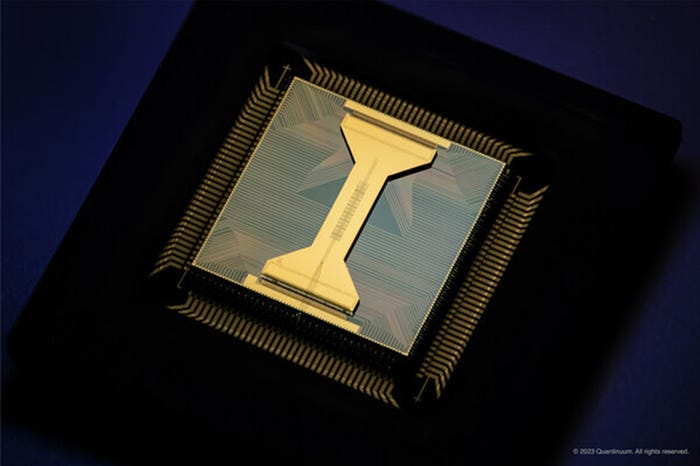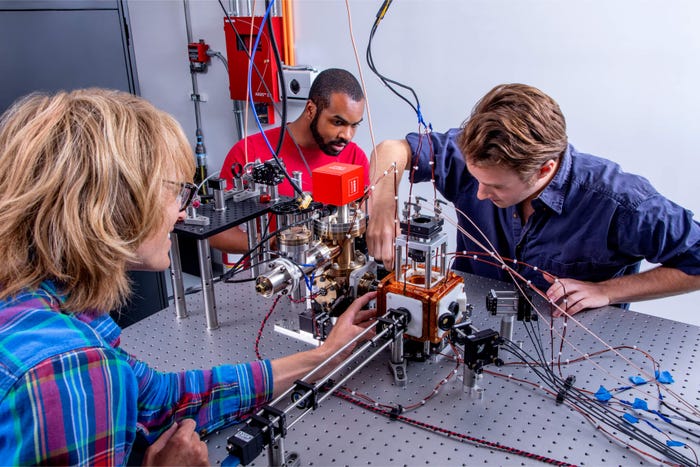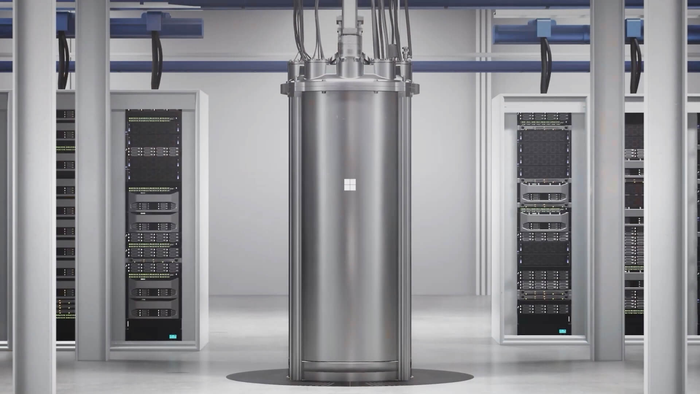
Connects decision-makers and solutions creators to what's next in quantum computing
Boeing to Demonstrate Quantum Networking in SpaceBoeing to Demonstrate Quantum Networking in Space
Satellite launching in 2026 aims to prove technology with applications in agriculture, climate science, navigation and secure communication

Boeing plans to launch a satellite in 2026 to demonstrate quantum networking from orbit.
The Q4S satellite is designed to demonstrate quantum entanglement swapping capabilities in space in a step towards a future secure, global quantum internet.
A quantum internet would be essential to the success of future quantum computers and sensors, connecting across vast distances securely and almost instantaneously.
Boeing is funding the first-of-a-kind, one-year experiment itself and is throwing its weight behind wider quantum technologies.
The company cites applications including fault-tolerant systems that reduce errors in computing, secure voting mechanisms that protect electoral integrity and “blind” quantum computing which allows data to be securely processed without exposure.
"We're making a big bet on quantum technology," said chief engineer for Boeing's disruptive computing, networks and sensors organization Jay Lowell.
“Quantum entanglement swapping underpins the communication of the future, expanding quantum networks beyond simple point-to-point communication. We're launching Q4S to prove it can be done in orbit.”
A quantum internet relies on entanglement, the quantum property by which two or more particles are connected in such a way that the state of one particle instantaneously affects the state of the other, no matter how far apart they are.
One of the challenges in building a quantum internet is the loss of entanglement over long distances, which can be overcome by entanglement swapping. This is a process where two particles that were never directly entangled become entangled through the use of a third pair of entangled particles.
“By demonstrating entanglement swapping, we can create a scalable network, where quantum information can be transmitted over vast distances, something currently limited by decoherence and loss,” said Lowell.
Quantum networking capabilities in space can unlock new potential, helping researchers gather more data about the Earth and space environments where current instrument sensitivity and resolution limit progress.
The payload for the Q4S demonstration involves two entangled photon pair sources housed within a space vehicle.
Boeing and its payload and technology partner, HRL Laboratories, a joint venture between Boeing and GM, have tested the equipment in the lab and are finalizing the design of a space-hardened version tp launch.
“Boeing has always served as a pioneer, pushing the boundaries of what's possible," said Boeing's chief technology officer Todd Citron.
“We're doing much more than participating in quantum research, we are leading the way to operationalize and scale quantum technologies for global applications.”
About the Author
You May Also Like






